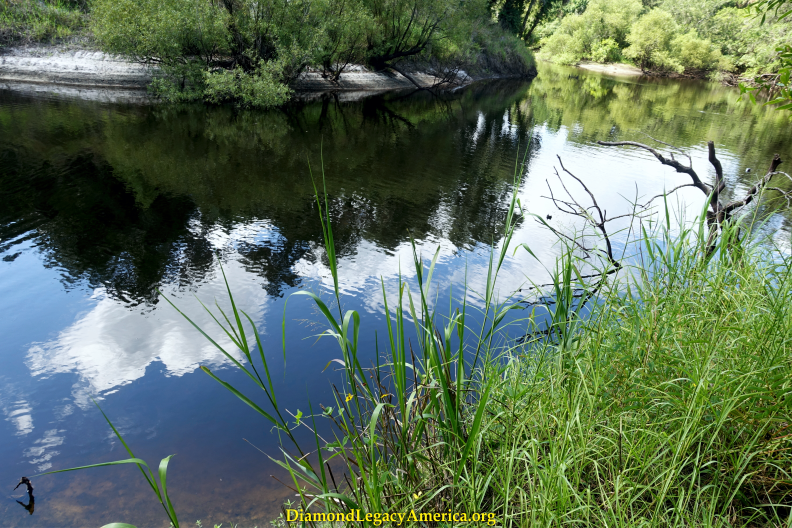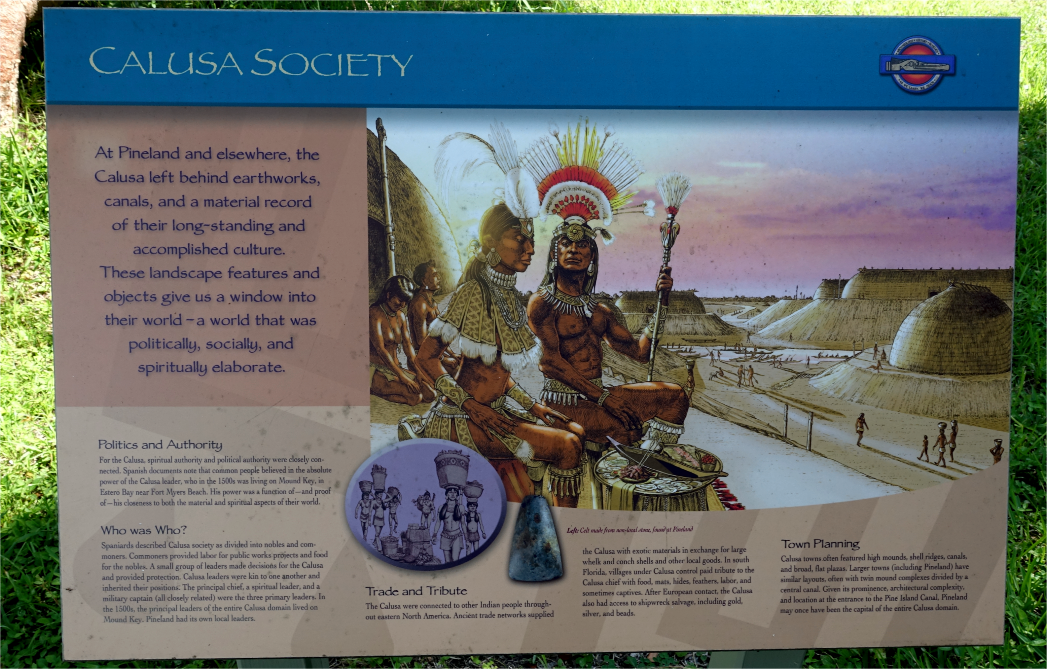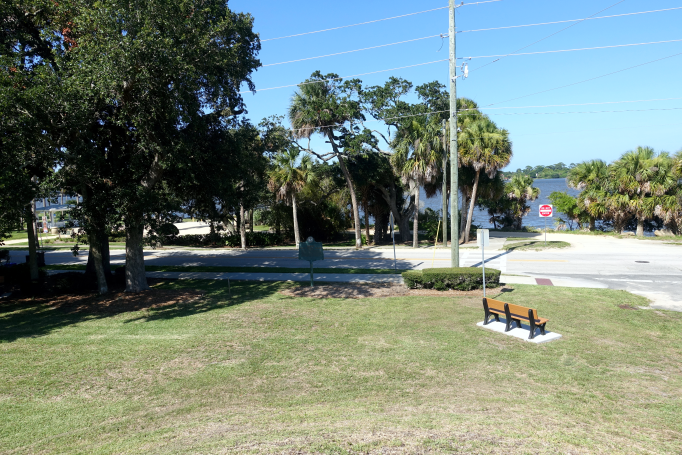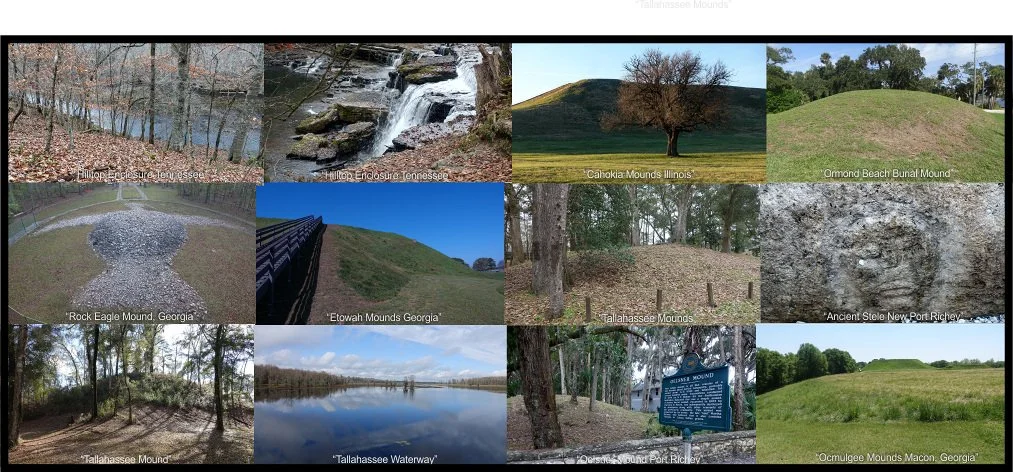Briefly reviewing our journey before proceeding, Part Three of this Ancient Mound Appreciation Guide started at “New Smyrna Beach” where we documented an ancient coquina structure within an earthen mound. At “Seminole Rest” we studied mounds near the lagoon estuary that were built by Original Inhabitants, and yet, still standing as the foundation for colonist housing. At Emerald Mound we observed the similarities in design between the moon and sun “temple” mounds with larger pyramids at Teotihuacan. Traveling to Rock Eagle and Rock Hawk mounds offered an example of “effigy mounds” built with stones and maybe even a platform mound near the waterway. Historical evidence suggests that the mounds were likely built by the Guale or Yamasse Tribes. And at Teotihuacan, we witnessed ancient pyramids that were constructed with multiple tiers and also inner use areas.
PART FOUR
Monuments Featured: “Chattahoochee Mound Center”, Kolomoki Mounds, Ancient Mounds at Randall Research Center, L.S.U. Mounds and The Great Serpent Mound.
Chattahoochee River Mounds – Chattahoochee, Florida
The so-labeled Chattahoochee Landing Mound Group earns significance as a major ceremonial center featuring a large pyramid shaped Temple Mound and two of six platform mounds forming a semi-circle that aligns strategically with important seasons of the sun. These ancient monuments were constructed by Mississippian Era people who possessed innate talent as engineers, designers and astrologers—the same builders of the Kolomoki Mounds at Blakely, Georgia. Archaeologists and historians delare that early Natives experienced hundreds of years (AD 900 - AD 1550) of natural abundance that facilitated viable sustenance, commerce and trade networks near the original confluence of the Chattahoochee and Flint Rivers. In 1799 it was recorded that Creeks named the river Chattahoochee (chat-to meaning "stone" and ho-che meaning "marked" or "flowered"). Nowadays this river system involves an impoundment on the Apalachicola River at "Lake Seminole" (a massive reservoir lake on the Georgia-Florida border) near its point of origin where the Chattahoochee and Flint Rivers meet. Some researchers claim this combination of the Apalachicola-Chattahoochee Rivers, totaling 430 miles, makes it the longest waterbody at Florida territory and moves the 310-mile Welaka River (St Johns) to second. Remarkable archaeological evidence reveals numerous human habitation and heritage sites along these ancient rivers, spanning from north Georgia Blue Ridge Mountains all the way to the Gulf via Apalachicola Bay at Florida.
Video Brief of Chattahoochee Mound Group
Kolomoki Mounds – Blakely, Georgia
There is an impressive ancient monument called the "Great Temple Mound" that stands 57 feet tall with a flat-topped pyramid shape and circumference of 158 x 66 feet. It is the focal point of so-labeled Kolomoki Mounds Park which consists of several prehistoric mounds and evidence of a plaza, village or town, pole walls and artifacts. Some archaeologists claim the mounds were mostly built around AD 200-600 (or the "Middle Woodland Period") and the onsite historic marker notes it is "one of the largest and most important mound groups in the southeastern United States." The mounds are located in a remote area near "Blakely Georgia" surrounded by natural forested lands and two waterbodies, Lakes Yohola (impounded) and Kolomoki (formerly Little Kolomoki Creek and Chattahoochee River tributary). Research shows that the "Mississippian Period" lasted from about AD 800-1100 and developed "some of the most complex societies that ever existed at North America." Published records cite that the history of early Georgia is largely the history of the Creeks and disclose significant ancestral connections between the Muscogee-Creek and Guale-Yamasse groups well-established at Georgia, Florida, South Carolina, and other territories. Also, Kolomoki was said to be the name of a Creek Confederacy group called the Kolima-ki or Colima people, which infers lineage to the Indigenous Colimas of Mexico and Olmec-Mayan ancestry at South and Central America. The legacy of Original Inhabitants is worthy of continued scrutiny in pursuit of truths that dispel colonial dogma and exploitation.
Video Brief of Kolomoki Mounds
Calusa Heritage Mounds
Overlooking Pine Island Sound are incredible monuments created by the ancient Calusa culture who ruled vast regions of south “Florida”. Possessing mound builder ancestry, they developed elaborate towns, designed important canal systems, and established complex political, social and artistic traditions. Pineland was a major shoreline Calusa town with significant mound formations that are being preserved as the Pineland Archaeological Site. More than 140,000 items were collected, including artifacts like ceramics, pottery sherds, tools, and decorative objects. This especial collection is said to contain 1900-year old uncharred seeds documented as "the only known prehistoric papaya seeds ever found in North America" and "the only prehistoric chile pepper seeds known for the eastern United States." In the middle of the Pineland Site is the "Randell Research Center" which occupies 67 acres and conserves 100-plus acres of invaluable landscape and native estuarine terrain. The Calusa Heritage Trail passes through several mounds, including a sacred burial named "Smith Mound" (which formerly was 30 ft tall and 300 ft long and was surrounded by a lake) and the "Low Mound" (which stands 10 ft and 100 ft across and said to be older than the burial mound). Also, archaeological evidence shows that Mound Key, located on a high ridge above Estero Bay, was capital of the powerful Calusa kingdom and many ancient monuments are present there.
Video Brief of Calusa Heritage Mounds
Twin Mounds at Louisiana Campus
Two ancient monuments existing at the "Louisiana State University campus", powerfully, signify American Civilization prior to "colonist encroachment". These twin earthen mounds are reported to be, "the oldest known extant man-made structures in the Americas" built around 11,000 years ago. Researchers claim that prehistoric archaeological sites in the area were most notably of the Woodland and Mississippian cultures. These twin mounds are said to have been completed about 6,000 years ago and are similar in height—around 20 feet tall. Today, they overlook the Mississippi River floodplain. Archaeologists report finding fragments of charred mammal bone, suggesting the mounds had ceremonial or ritual purpose. It was also proclaimed that they were astronomically aligned with the giant red star "Arcturus" – which is among the brightest stars seen in the night sky from Earth.
The prominent mound duo were likely landmarks for travelers along the original Mississippi River (before it shifted). Interestingly, some historical documents note that First Inhabitants known as the Houma Nation were well-established along the east side of the River (now at "Louisiana" territory) prior to European invasion and usurpation. To avoid continual exploitation, the Houma kept moving southward (especially when energy companies discovered valuable oil and gas deposits on their homeland). Presently, they live in bayou communities, while consistently attempting to gain recognition that would restore their Indigenous rights.
Video Brief: “LSU” Mounds
“Serpent Mound - Peebles, Ohio”
The Great Serpent Mound, an enigmatic earthwork, is said to be the largest effigy mound in North America. Upon first sight, you might become overwhelmed with appreciation, awe, and wonder. And the incredible overhead panoramic views of the entire effigy is an even more spectacular experience. You embrace the stark realization that this is a large site containing three sacred Burial Mounds, built by Indigenous People on top of an elevated plateau about 150 feet above Brush Creek (a 60-mile tributary of the Ohio River and part of the Mississippi River watershed). The serpent effigy spans almost 1400 feet from its head (east, aligning to the Summer Solstice sunset) to its coiled tail (west, pointing to the Winter Solstice sunrise). And ancient cultures are thought to have utilized similar structures for timing agricultural planting and harvesting cycles. You get a sense of the snake's magnitude while walking the path around its body that showcases seven winding curves, which (reportedly) in 1846 measured 5ft high and 30ft wide and are now reduced to 4ft x 20 ft in certain spots. These curves likely have celestial significance that aligns with other star patterns. Upon reaching the platform overlooking the Brush Creek and Ohio Valley, indulge yourself with stunning vistas of nature's grace and majesty—flowing water, mixed forests, wildlife, and ancient bluff foundation, existing within varying environments from the past to present. What a blissful memory to cherish and share with others.
Our research of the area revealed geological history reports documenting that "Serpent Mound was built within the ancient remains of a meteorite impact crater." Interestingly, some archaeologists claim the builders of this mound effigy were the Ancient Adena Culture and/or Hopewell Culture; while others suggest the mound-building Fort Ancient Culture living in the Ohio Valley region were responsible, noting that similar rattlesnake designs were used by Mississippian cultures at Cahokia Mound. Some archaeologists determined that Adena and Fort Ancient cultures had roles in constructing the effigy since the burial mounds located nearby were from both of them (2-Adena; 1-Fort Ancient). After years of scrutinizing scientific data, archaeologists remain puzzled and acknowledge that Serpent Mound is extraordinary. We found that the esteemed legacy of Original Inhabitants is documented in areas all around the Ohio River Valley and beyond. Thus, we venerate the legacy of Ancient Mound Builders of the Great Serpent Mound and many others—fully aware that differences of opinion and speculation regarding its age, builders, culture, symbology (et cetera) is varied and vast.
Video Brief Serpent Mound Ohio









































































































